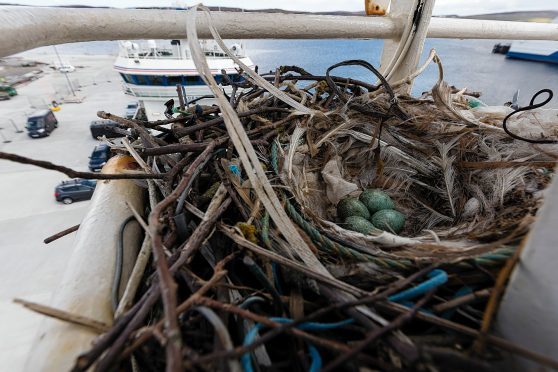A crow has taken up residence on a Shetland fishing boat, appropriately enough in the pelagic vessel’s crow’s nest.
The crew of the Lerwick-registered Adenia noticed an assortment of twigs and rope at the top of the forward mast not long after they tied up at the new Holmsgarth North jetty in it’s home port.
Adenia’s nest now has four eggs and the mother can frequently be seen flying to and from the boat to tend to them.
Skipper George Anderson said: “We first noticed some twigs up there as well as on the deck.
“Then we saw the crow going back and forth. We can see it has been feeding on mussels because some shells have fallen from up on the mast.
“It’ll likely not be long before the eggs hatch. Who says man and nature can’t get along?”
Naval legend suggests the term crow’s nest has Viking origins.
Viking sailors were said to carry crows or ravens in a cage at the top of the mast, releasing them when visibility was poor and following them as they made for land.
However, the name is more likely to derive from a barrel-shaped platform – resembling a crow’s nest in a tree – made in 1807 by the explorer William Scoresby to protect his lookout.
It is not the Adenia crew’s first brush with wildlife.
Last summer, when she was berthed at Victoria Pier, Lerwick, an otter came aboard via the gangplank and spent a few hours looking around before departing.
And the vessel, which featured in the BBC’s popular Trawlermen series a few years ago, was previously used by scientists to study the abundance of killer whales in waters around Shetland.
